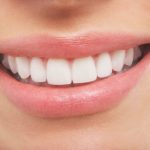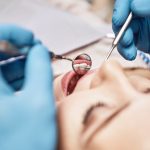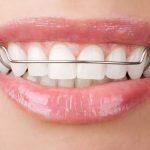Perfecting Your Smile: How Should Teeth Line Up for Optimal Dental Health?
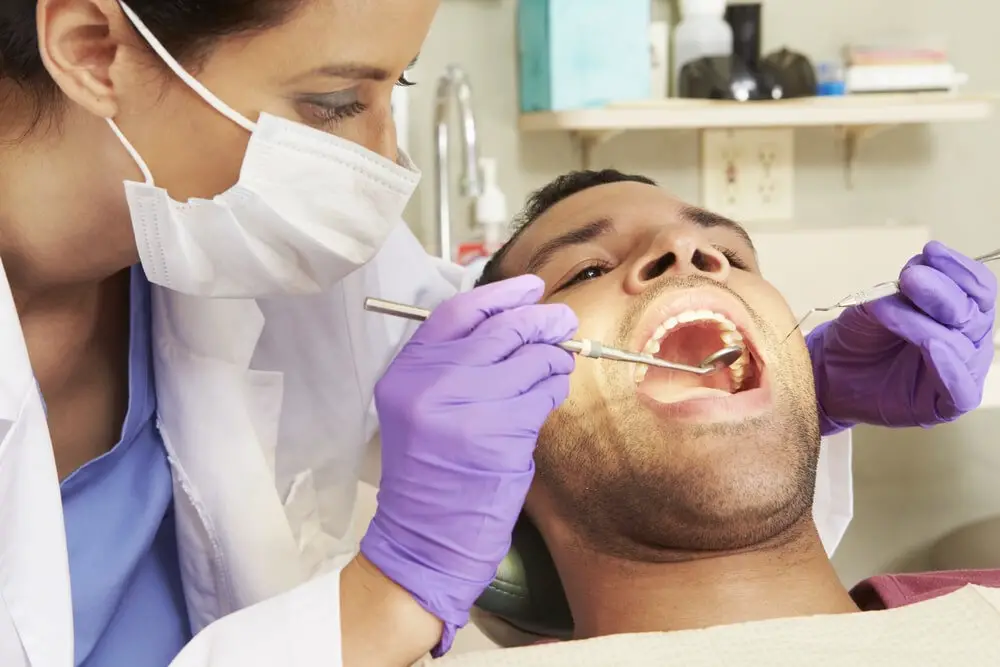
Your smile is one of the first things people notice about you, and having straight, healthy teeth can greatly enhance one’s appearance and boost self-confidence. However, the benefits of a well-aligned smile extend beyond the cosmetic realm, as proper tooth alignment is essential for optimal dental health. A misaligned bite can cause a range of dental issues, from tooth decay to gum disease, and can even lead to jaw pain and difficulty chewing. Achieving proper tooth alignment requires a deep understanding of dental anatomy and the mechanics of the bite. While every individual’s teeth and jaw are unique, there are general guidelines that dentists and orthodontists use to determine how teeth should line up for optimal dental health. In this article, we’ll explore these guidelines and discuss the various methods used to correct misaligned bites, including traditional braces, clear aligners, and other orthodontic treatments. Whether you’re considering orthodontic treatment for yourself or simply curious about the science behind a healthy smile, read on to learn more about how teeth should line up for optimal dental health.
Dental health is crucial for overall physical wellbeing, as oral hygiene is directly linked to the rest of the body. Poor dental health can lead to a host of issues, including gum disease, tooth decay, and even heart disease. Additionally, dental problems can cause discomfort and pain, leading to difficulty eating and speaking. Proper dental care, including regular brushing and flossing, as well as routine visits to the dentist, can help prevent these issues and maintain a healthy smile. Ensuring that teeth are properly aligned is also essential for optimal dental health, as misaligned teeth can lead to bite problems and further dental issues. By prioritizing dental health, individuals can improve their overall health and wellness, as well as achieve a perfect smile.
Having properly aligned teeth is essential for optimal dental health. When teeth are misaligned, it can lead to a variety of issues such as difficulty cleaning between teeth, which can result in gum disease and tooth decay. Crooked teeth can also cause excessive wear and tear on teeth, leading to chipping and cracking. Additionally, misaligned teeth can put extra pressure on the jaw and lead to temporomandibular joint (TMJ) disorders, which can cause pain and discomfort in the jaw, neck, and head. In severe cases, misaligned teeth can also affect speech and chewing ability. Therefore, it is important to seek orthodontic treatment to correct misaligned teeth and prevent these dental health issues.
Understanding Teeth Alignment

Having a perfect set of teeth is not just about having a beautiful smile, it is also essential for optimal dental health. The alignment of teeth plays a significant role in maintaining oral health, as misaligned teeth can lead to several dental problems such as gum disease, tooth decay, and even jaw pain. The proper alignment of teeth ensures that the biting and chewing functions are working correctly, leading to good digestion and avoiding unnecessary stress on the jaw muscles. Teeth alignment also helps to prevent overcrowding, which can lead to dental decay and gum disease. Teeth alignment can be achieved through several dental procedures, including braces, aligners, and retainers. Braces are the most conventional method, consisting of brackets and wires that gently push the teeth into the correct position over time. Aligners, on the other hand, use clear trays that are custom-made to fit the teeth and gradually shift them into place. Retainers are used to maintain the alignment of teeth after the braces or aligners are removed. It is essential to consult with a dental professional to determine the best method of teeth alignment for your specific needs. By maintaining proper teeth alignment, you can improve your dental health, boost self-confidence, and have a beautiful smile that lasts a lifetime.
Teeth alignment refers to the proper positioning and orientation of teeth in a person’s mouth. It is a crucial aspect of dental health as it affects the overall functionality and appearance of an individual’s teeth. When teeth are correctly aligned, it allows for a proper bite, which aids in efficient chewing, speaking, and overall oral health. Moreover, well-aligned teeth contribute to a more attractive smile, boosting one’s self-esteem and confidence. Teeth alignment can be achieved through various dental treatments such as braces, clear aligners, and other orthodontic procedures. A skilled dentist or orthodontist can evaluate a patient’s teeth alignment and recommend the best course of treatment to achieve optimal dental health.
The alignment of teeth plays a pivotal role in maintaining optimal dental health. Normal alignment involves teeth lining up in a way that allows them to work together effectively, enabling proper chewing and speech. It also promotes good oral hygiene, as it is easier to clean teeth that are in proper alignment. On the other hand, abnormal alignment can lead to a host of dental issues, such as crowded or crooked teeth, malocclusion, and an increased risk of tooth decay and gum disease. It can also cause discomfort, pain, and difficulty chewing, which can impact overall health and quality of life. Therefore, it is essential to seek professional dental care to correct any abnormal alignment issues and maintain good oral health.
Misalignment of teeth can occur due to a variety of reasons, including genetics, environmental factors, and habits. Genetic factors such as smaller jaw size or larger teeth can result in crowding or spacing issues. Environmental factors such as early childhood habits like thumb-sucking or prolonged pacifier use can also affect the alignment of teeth. Additionally, the loss of teeth due to injury or decay can cause the remaining teeth to shift and become misaligned. Poor oral hygiene and dental care can lead to gum disease, which can cause the teeth to shift or become loose. Finally, some medical conditions such as cleft palate or jaw tumors can also cause misalignment of teeth. Understanding the causes of misalignment can help individuals take preventative measures to maintain optimal dental health.
Consequences of Misaligned Teeth
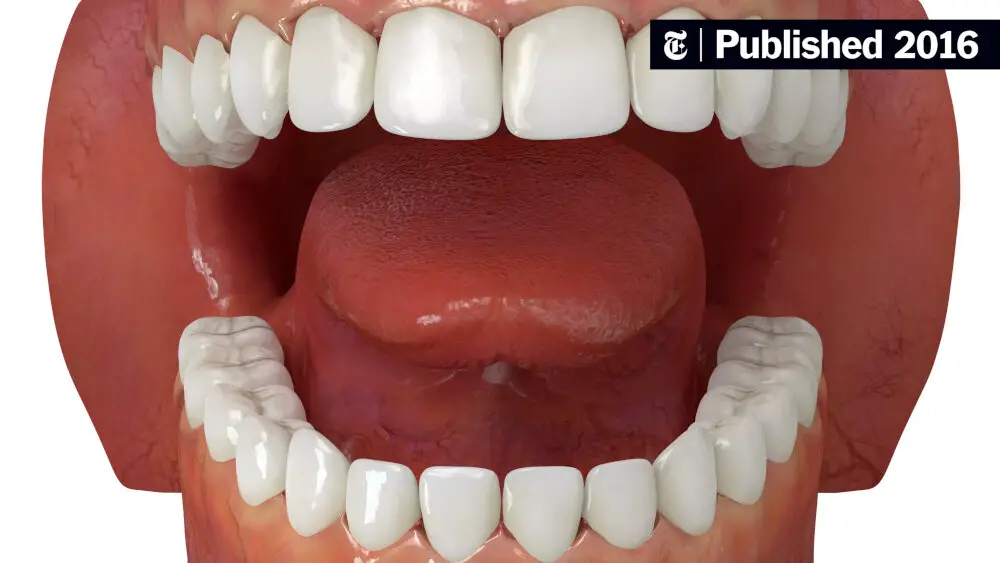
Misaligned teeth, also known as malocclusion, can have various consequences on a person’s dental health. The most obvious effect is on appearance, as crooked or protruding teeth can result in self-consciousness and a lack of confidence when smiling. However, misaligned teeth can also lead to functional issues such as difficulty chewing or speaking. These problems can cause discomfort, embarrassment, and even impact one’s overall quality of life. Additionally, misaligned teeth can increase the risk of tooth decay and gum disease as they can make brushing and flossing more difficult. Crowded or overlapped teeth can create tight spaces where plaque and food particles can accumulate and lead to the development of cavities and gum inflammation. Therefore, seeking orthodontic treatment to correct misaligned teeth is not only beneficial for aesthetic purposes but also for the overall health of the mouth. Furthermore, misaligned teeth can cause problems with the alignment of the jaw, leading to issues such as temporomandibular joint (TMJ) disorder. This condition can cause pain and discomfort in the jaw, face, and neck, as well as headaches and earaches in some cases. Misaligned teeth can also cause uneven wear on the teeth, leading to premature erosion and damage to the enamel. This can result in sensitivity to hot and cold foods and drinks, as well as an increased risk of tooth fractures and decay. Therefore, it is essential to address misaligned teeth promptly to prevent further dental health problems and ensure optimal oral health. By seeking orthodontic treatment, individuals can improve both their appearance and dental function, leading to a healthier and happier smile.
Misaligned teeth can lead to various dental problems that affect not only your oral health but also your overall well-being. Crooked teeth can make it challenging to clean properly, allowing plaque and bacteria to accumulate, leading to tooth decay, gum disease, and bad breath. Misaligned teeth can also cause discomfort, such as jaw pain and headaches, as they put pressure on the surrounding tissues and nerves. Additionally, they may lead to abnormal wear and tear on the teeth, making them more vulnerable to cracks and fractures. Fortunately, orthodontic treatments such as braces and clear aligners can correct misaligned teeth, improving your smile and preventing potential oral health issues.
The alignment of teeth plays a significant role in overall health. Poorly aligned teeth can cause a range of dental problems such as tooth decay, gum disease, and bad breath. When teeth are not properly aligned, they can be difficult to clean, leading to the buildup of plaque and tartar. This can lead to an increased risk of gum disease, which has been linked to a range of health problems, including heart disease and stroke. Additionally, misaligned teeth can lead to jaw pain and headaches, as well as difficulty chewing and speaking. By ensuring that teeth are properly aligned, individuals can improve their overall health and reduce the risk of dental and other health problems.
Misaligned teeth, also known as malocclusion, can have a significant impact on an individual’s psychological well-being. People with misaligned teeth often experience low self-esteem, reduced confidence, and social anxiety. They may feel embarrassed about their appearance, which can lead to a lack of participation in social activities, and even cause them to avoid smiling altogether. Misaligned teeth can also make it difficult to maintain proper oral hygiene, which may result in tooth decay and gum disease. In addition to the physical health consequences, the psychological effects of misaligned teeth can be severe and long-lasting. It’s important to address malocclusion through orthodontic treatment, not only for optimal dental health but also for improved self-esteem and overall well-being.
How to Achieve Optimal Teeth Alignment
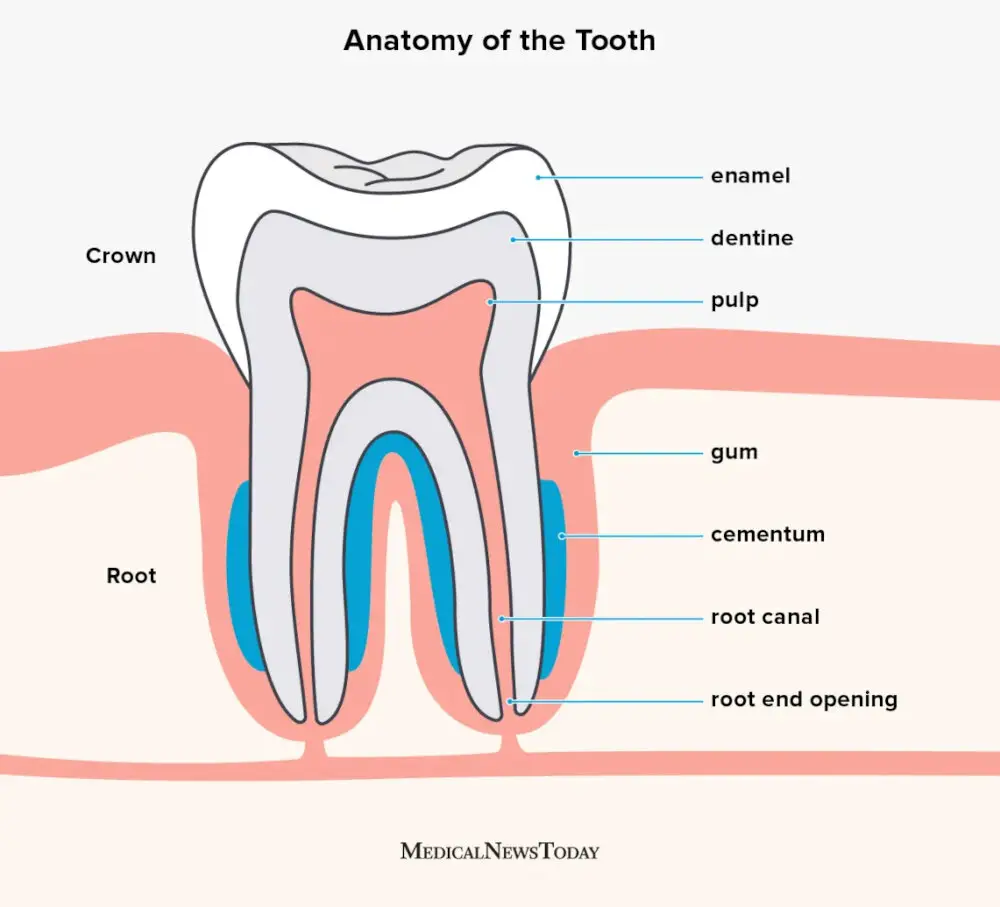
Achieving optimal teeth alignment is not just about having a perfect smile, but it is also about maintaining good oral health. Crooked or misaligned teeth can lead to various dental problems such as gum disease, tooth decay, and bad breath. There are several ways to achieve optimal teeth alignment, and one of the most popular methods is orthodontic treatment. Orthodontic treatment involves the use of braces or clear aligners to gradually shift the teeth into their proper position. This treatment can take anywhere from a few months to a few years, depending on the severity of the misalignment. It is important to visit an orthodontist regularly to ensure that the treatment is progressing as intended. In addition to orthodontic treatment, there are several other things that you can do to achieve optimal teeth alignment. One of the most important things is to maintain good oral hygiene. This means brushing your teeth twice a day, flossing daily, and using mouthwash to kill bacteria. You should also avoid sugary and acidic foods that can erode the enamel on your teeth. Another way to promote optimal teeth alignment is to wear a mouthguard when playing sports or engaging in other physical activities that could result in dental injuries. By taking care of your teeth and seeking professional treatment when necessary, you can achieve optimal teeth alignment and maintain good oral health for years to come.
Orthodontic treatments are a specialized branch of dentistry that is dedicated to correcting misaligned teeth and jaws. These treatments can improve the appearance of your smile, as well as your overall dental health. Braces are one of the most common orthodontic treatments and can be used to correct a variety of dental issues, including overcrowding, gaps, and crooked teeth. In addition to traditional metal braces, there are also clear braces and aligners that can be used to straighten your teeth. Orthodontic treatments can also help correct bite problems, such as an overbite or underbite, which can lead to dental problems and pain. Overall, orthodontic treatments can help you achieve a healthy, beautiful smile that you can be proud of.
Braces are orthodontic devices that are used to align and straighten teeth, as well as to correct bite problems. There are several types of braces available, including traditional metal braces, ceramic braces, lingual braces, and clear aligners. Traditional metal braces consist of metal brackets and wires that are attached to the teeth and adjusted over time to gradually shift the teeth into the correct position. Ceramic braces work in a similar way to metal braces, but the brackets are made from tooth-colored materials, making them less noticeable. Lingual braces are custom-made to fit the back of the teeth, making them virtually invisible. Clear aligners, such as Invisalign, are removable trays that are custom-made to fit the teeth and gradually shift them into the correct position. Each type of braces has its own advantages and disadvantages, and your orthodontist will help you choose the best option for your specific needs.
There are various dental appliances that can be used to align teeth and improve dental health. Clear aligners, also known as invisible braces, are a popular option for those who want a discreet treatment. These custom-made trays gradually shift teeth into the desired position without the use of brackets or wires. Another appliance that can be used is lingual braces, which are similar to traditional metal braces but are attached to the back of the teeth, making them virtually invisible. For more complex cases, a palatal expander may be used to widen the upper jaw and create more space for crowded teeth. Additionally, retainers can be used to maintain the results of orthodontic treatment and prevent teeth from shifting back to their original positions. With the help of these dental appliances, individuals can achieve a straighter, healthier smile.
Maintaining Optimal Teeth Alignment
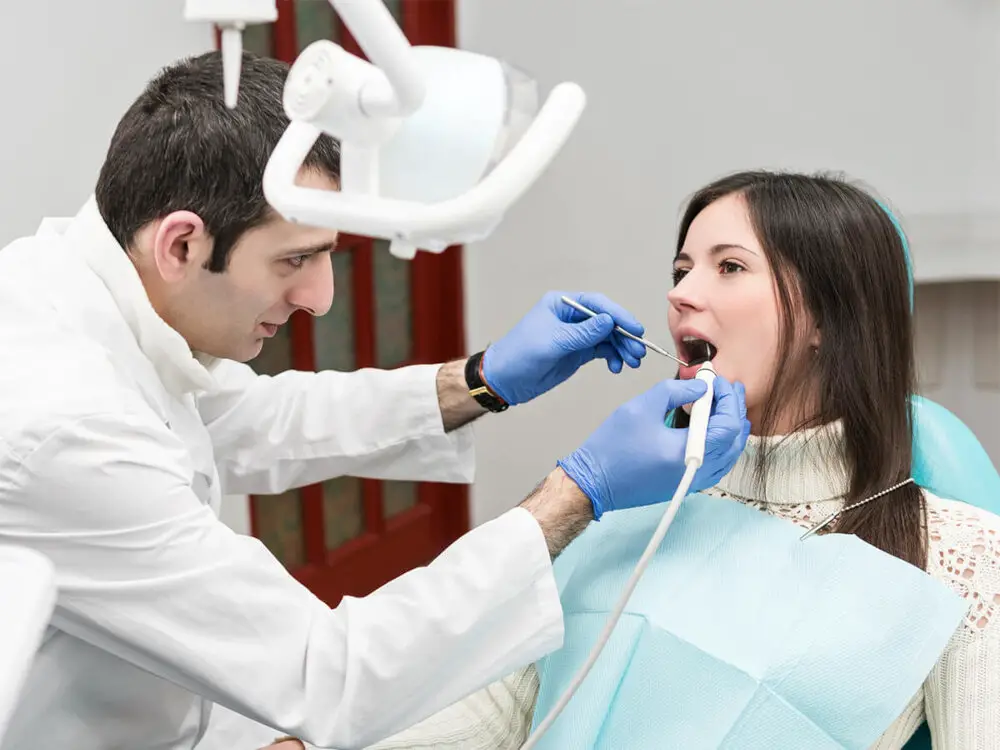
Maintaining optimal teeth alignment is essential for achieving optimal dental health. Crooked, overcrowded, or misaligned teeth can lead to a range of dental problems, including gum disease, tooth decay, and even tooth loss. Therefore, it is crucial to take proactive steps to ensure that your teeth are properly aligned. One way to maintain optimal teeth alignment is to practice good oral hygiene. Regular brushing and flossing can help prevent plaque buildup, which can lead to gum disease and tooth decay. Additionally, visiting your dentist regularly for checkups and cleanings can help ensure that any dental issues are caught early and treated effectively. If you do have issues with teeth alignment, your dentist may recommend orthodontic treatment, such as braces or clear aligners, to help straighten your teeth and improve your overall dental health. By taking these steps, you can help ensure that your teeth remain healthy and properly aligned for years to come.
Oral hygiene is a crucial aspect of maintaining good overall health. It is essential to keep our teeth clean and healthy to prevent tooth decay, gum disease, and other dental problems. Proper oral hygiene involves daily brushing and flossing, along with regular visits to the dentist for professional cleanings and check-ups. Neglecting oral hygiene can lead to serious health issues such as heart disease, stroke, and diabetes. Additionally, poor oral hygiene can also affect our self-esteem and confidence, as it can lead to bad breath and discolored teeth. Therefore, it is crucial to practice proper oral hygiene to ensure a healthy smile and a healthy body.
Maintaining proper tooth alignment is crucial not only for a beautiful smile but also for optimal dental health. To ensure that your teeth are properly aligned, it’s essential to adopt a healthy lifestyle. First and foremost, a balanced diet is crucial, as it provides the necessary vitamins and minerals to strengthen teeth and gums. Reducing sugar intake is also recommended, as sugar promotes the growth of harmful bacteria in the mouth. It’s also important to maintain good oral hygiene by brushing and flossing regularly and visiting the dentist for regular checkups. Additionally, avoiding habits like smoking and excessive alcohol consumption can help maintain tooth alignment and overall dental health. By incorporating these lifestyle changes into your daily routine, you can ensure that your teeth stay healthy and properly aligned for a lifetime.
Regular dental checkups and cleanings are essential for maintaining optimal dental health. These routine visits to the dentist allow for early detection and prevention of dental issues such as cavities, gum disease, and oral cancer. During a dental cleaning, the hygienist removes plaque and tartar buildup that cannot be removed by brushing and flossing alone. This helps to prevent tooth decay and gum disease, which can lead to more serious dental problems if left untreated. Additionally, regular dental visits give patients the opportunity to discuss any concerns they may have with their dentist and receive professional advice on how to improve their oral hygiene habits. By making dental checkups and cleanings a priority, individuals can achieve a healthy and beautiful smile that lasts a lifetime.
Having aligned teeth is a crucial aspect of maintaining optimal dental health. Teeth that are crooked or misaligned can create a host of problems, such as increased risk of tooth decay, gum disease, and even tooth loss. When teeth are not properly aligned, they can be more difficult to clean, making it more likely for bacteria to accumulate and cause decay or infection. Additionally, misaligned teeth can cause issues with bite and jaw alignment, leading to pain and discomfort in the jaw and even headaches. By seeking orthodontic treatment to align teeth, individuals can improve their overall oral health and prevent future dental problems.
Achieving and maintaining optimal alignment of teeth not only enhances one’s appearance but also has a multitude of health benefits. Straight teeth are easier to clean, reducing the risk of cavities, gum disease, and bad breath. Proper alignment also aids in the proper functioning of the teeth, jaw, and muscles, reducing the likelihood of headaches, jaw pain, and teeth grinding. Additionally, aligning teeth can improve speech and aid in digestion, as the teeth work together more efficiently to break down food. Investing in orthodontic treatment to achieve optimal alignment can lead to improved dental and overall health, as well as increased self-confidence and a brighter smile.
Maintaining oral hygiene is an essential aspect of our overall health and well-being. Regular brushing, flossing, and dental check-ups are crucial to prevent tooth decay, gum disease, and other dental issues. Seeking treatment and maintaining oral hygiene not only helps to keep your teeth and gums healthy but also improves your confidence and self-esteem. A healthy smile can make a significant impact on your personal and professional life. Therefore, it is important to prioritize your oral health and seek treatment from a dental professional to perfect your smile. Remember, a healthy smile is a beautiful smile!
Conclusion
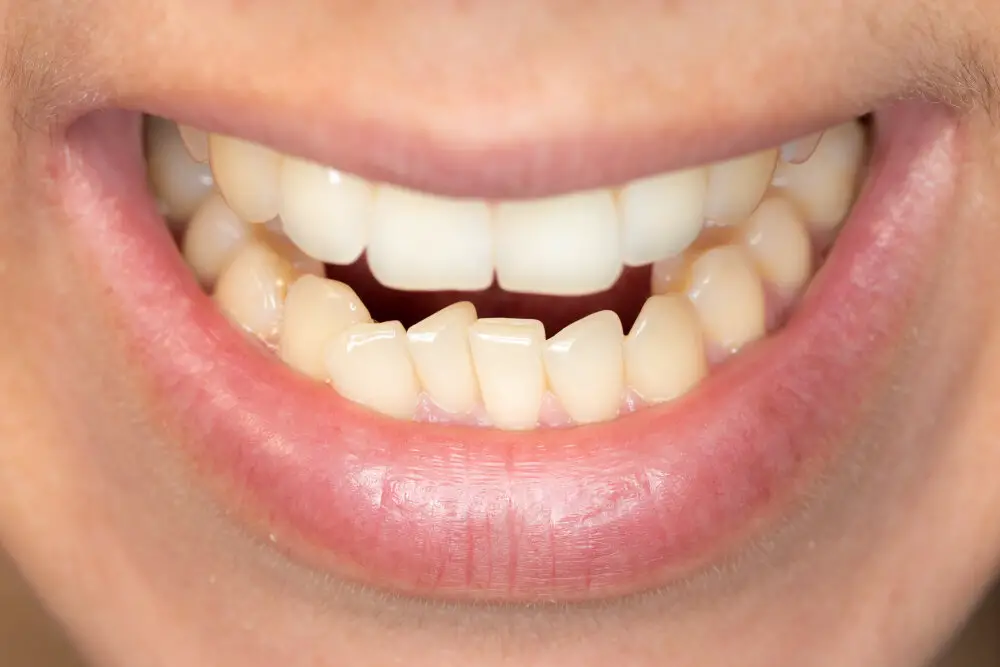
In conclusion, the alignment of teeth plays a crucial role in optimal dental health. The proper alignment ensures that teeth are easier to clean, reducing the risk of gum disease and tooth decay. It also helps distribute the force of biting and chewing evenly, preventing premature wear and tear on teeth. Additionally, a well-aligned smile can boost confidence and contribute to overall physical and mental well-being. Therefore, it is important to seek the advice of a dental professional to determine the best course of action for achieving a perfectly aligned smile. Whether it be through orthodontic treatment or other interventions, investing in the alignment of your teeth is truly an investment in your oral health and overall quality of life.
